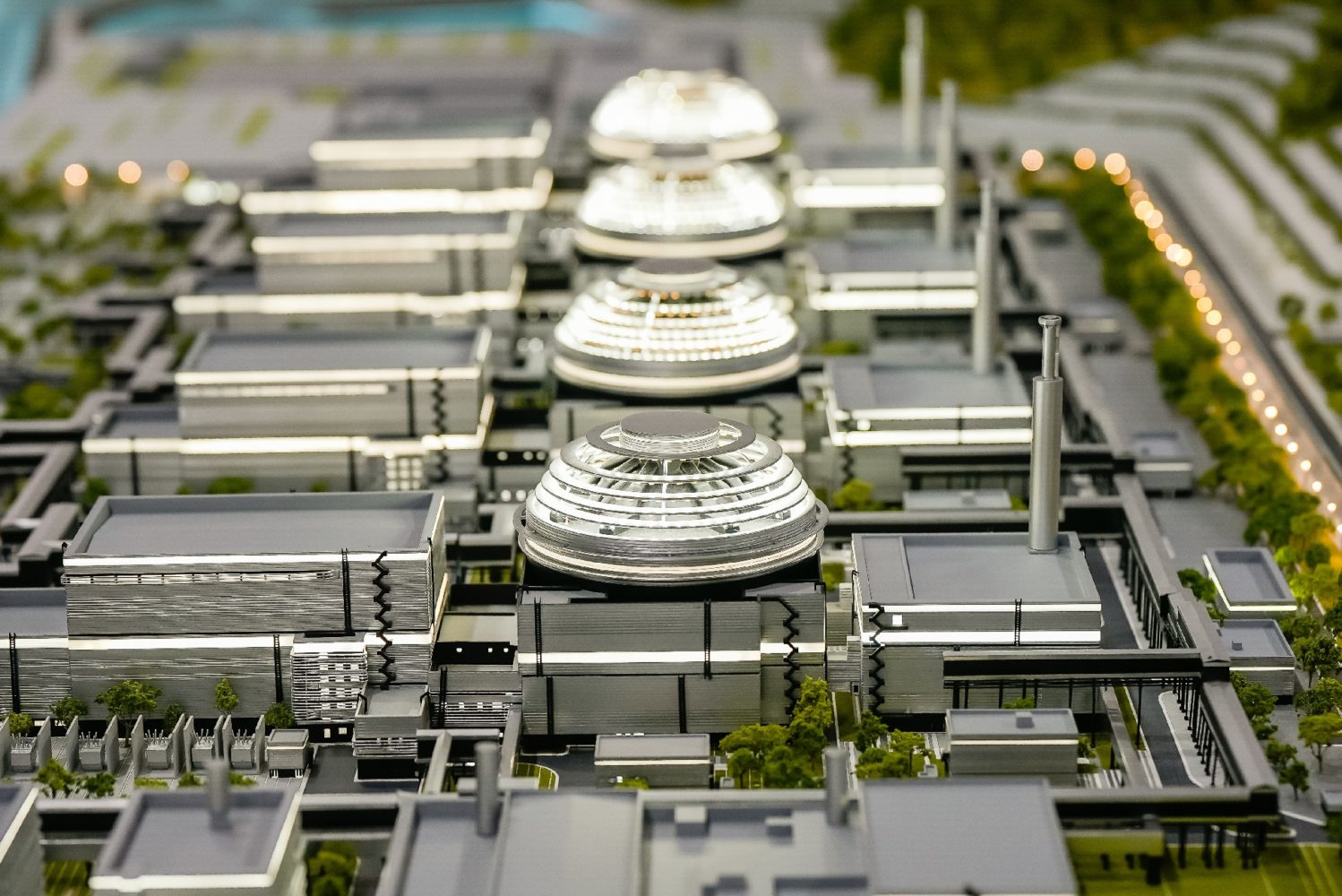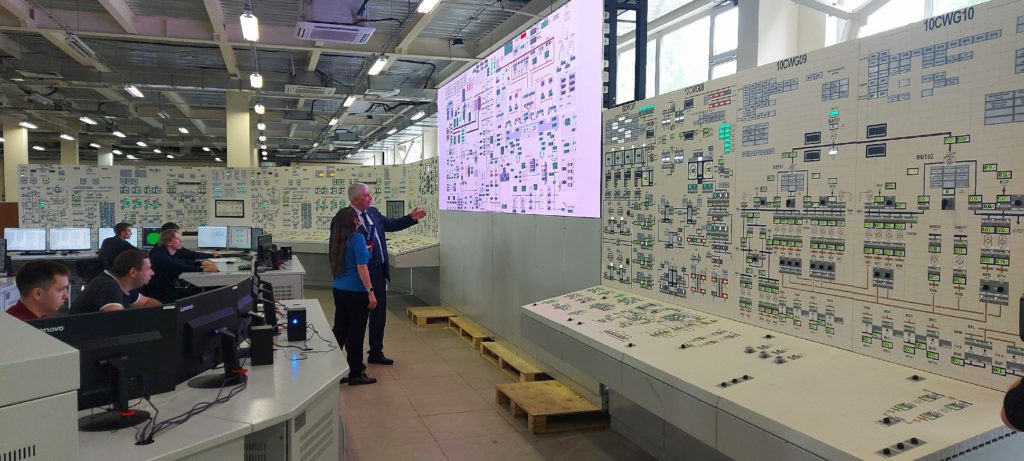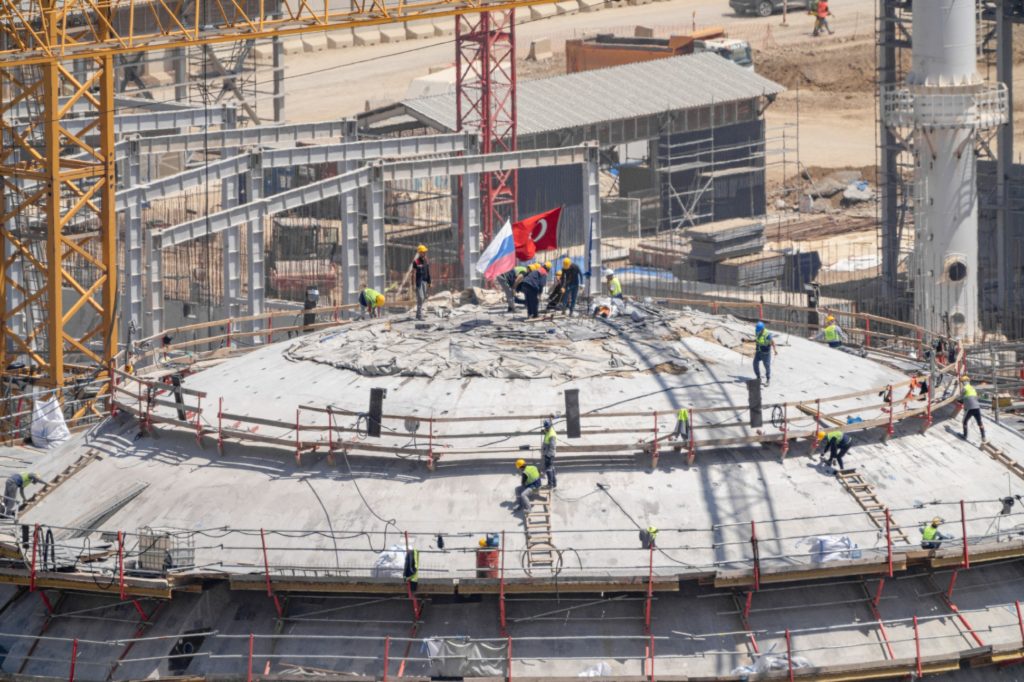
Akkuyu Unit 1 Hits Homestretch
back to contentsConstruction of the first unit of the Akkuyu NPP is in the homestretch, as concreting of the inner containment shell was completed in late May. The remaining three units are being constructed according to schedule.
The inner containment shell (ICS) ensures the reactor building is airtight. Concreting of the ICS represents a key milestone in the entire construction process. In order to make the ICS dome as strong as possible, workers laid 422 tons of steel rebar and over 3,200 cubic meters of concrete. Since concrete is highly fluid and self-compacting, it fills the structure by gravity, while maintaining a substantial water-retaining capacity, reliability, strength, and homogeneity of its composition. The ICS dome has now reached the height of 61.7 meters.
“Our close-knit teams are carrying out construction work at all four power units in parallel. With the ICS construction completed at Unit 1 and the first shipment of nuclear fuel delivered, we are entering the homestretch. Installation of the outer containment and acceptance work are still ahead,” Akkuyu Nuclear CEO Anastasia Zoteeva commented.
A specialized high-grade concrete mix is used for concreting operations at the Akkuyu NPP. Its properties — temperature, cone slump, and density — are monitored continuously. Each concrete batch must pass a series of laboratory tests.
Construction works at the other three units are continuing. The third tier of the ICS was installed at Unit 3 in May. This 280‑ton welded steel structure consists of 24 sections and is 12 meters high. Parts of the ICS tier are assembled on the ground into a single, ring-shaped structure with a diameter of 44 meters. After the installation of the third tier, Unit 3 reached a height of 28.95 meters.
Apart from the plant construction, Rosatom is involved in staff training for the nuclear power plant. In May, the Balakovo NPP in Russia hosted a training session for the employees from seven nuclear power plants, including Akkuyu. They spent three days studying and practicing the operational decision-making procedures under the guidance of experienced instructors. When the reactors are in operation, situations might arise that require optimal decisions to ensure the safety and efficiency of the nuclear power plant. The ability to make decisions by analyzing the situation and assessing potential risks is an important component of effective plant operation.
The training materials are based on many years of international experience in operating nuclear power plants. “Such seminars help lower, medium and top-level managers acquire leadership qualities,” says Sergey Loktionov, Head of Training at the WANO Moscow Center.

The Akkuyu personnel will receive training not only in Russia but also on-site. In May, the Russian Institute for NPP Operation (VNIIAES, part of Rosatom) sent two — full-scale and analytical — simulators to Turkey. The full-scale simulator (FST) of a nuclear power unit is intended for training, licensing, and maintaining the qualifications of the control room operating personnel. The FST comprises exact replicas of the main and backup control panels of the real Akkuyu Unit 1. It is a combination of hardware and software, integrated with an end-to-end mathematical model of the power unit.
The analytical simulator uses the same real-time model as the full-scale simulator. Its main difference from the FST is that the control panels are displayed on touch-screen monitors.
In the near future, VNIIAES is also planning to send equipment for five training classrooms to the Akkuyu Training Center.

The four-unit nuclear power plant under construction in the Turkish province of Mersin will play an important role in both Turkey’s energy industry and environmental protection. Sustainable development of any country in the economic, industrial, social, and even political sectors depends on a balanced combination of low-carbon energy sources that are climate-neutral, available 24/7 and predictable, says Alexander Voronkov, Vice President and Director at Rosatom Middle East and North Africa. Speaking at the 14th International Economic Forum ‘Russia — Islamic World: KazanForum 2023’ in Kazan, he noted: “Turkey’s only Akkuyu NPP with four VVER‑1200 reactors will meet around 10 % of the country’s electricity needs and reduce carbon dioxide emissions by about 18 million tons per year, which is equivalent to the emissions of almost 10 million cars a year!”
Alexander Voronkov also stated that, in addition to producing electricity, the nuclear power plant would be a key contributor to the economic and social development of the host communities. “For example, one job at the nuclear plant provides conditions for creating another ten jobs in related industries and infrastructure, stimulating local development, substantially increasing the country’s GDP, and promoting technological, educational, and scientific growth,” Alexander Voronkov pointed out.




